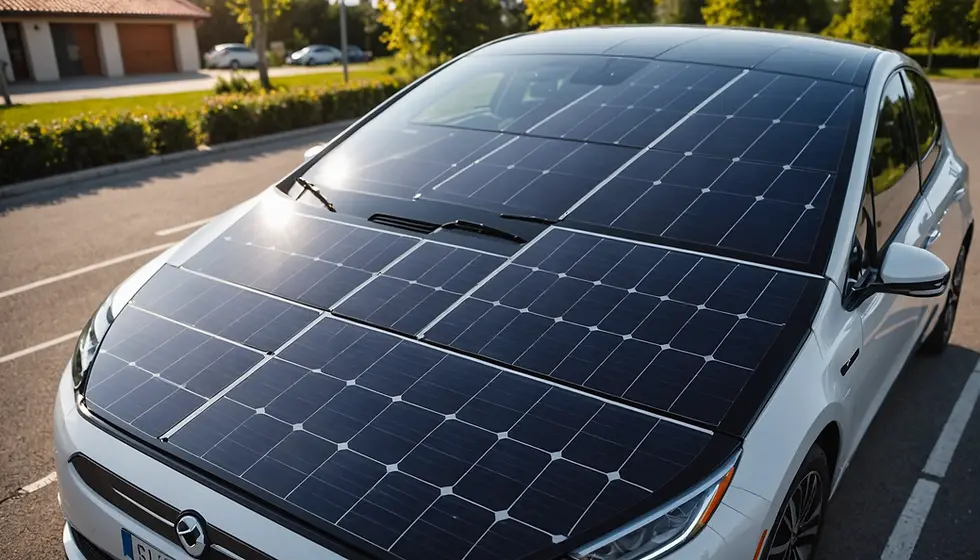Crafting a Comprehensive Resource Management Plan for Your Self-Charging Electric Vehicle Project
- Menno Drescher

- Sep 4, 2025
- 4 min read
Engaging Insights into Resource Management
The automotive industry is experiencing a transformative shift with the emergence of self-charging electric vehicles (SCEVs). These vehicles not only promise a cleaner future but also challenge conventional automotive processes. As this sector evolves, employing a solid resource management plan is vital for success. Properly managing resources ensures that innovative ideas meet realistic execution, leading to viable products on the market.
Understanding Resource Management
Resource management involves planning, organizing, and overseeing all project resources. In the SCEV project, this covers human, financial, and material resources. A robust plan helps keep the project in alignment with timelines and budgets, ultimately achieving set goals effectively.
Defining Project Goals and Objectives
The foundation of a successful resource management plan lies in outlining clear project goals. For the SCEV project, the main goal is to design and launch a commercially successful self-charging electric vehicle by 2030. Specific objectives include:
Developing a self-charging system: This will leverage solar panels that can generate up to 15% of the vehicle's energy needs and regenerative braking that captures energy during deceleration.
Creating a safe, user-friendly design: Incorporating features that enhance user experience and safety, backed by robust testing protocols.
Attracting funding: Targeting a minimum of $5 million in investment through partnerships with venture capitalists focused on green technologies.
Building a strong brand: Aiming to resonate with eco-conscious consumers by showcasing sustainability and innovation effectively.
Capturing market share: Setting a goal to secure 5% of the electric vehicle market within five years of launch.
These clearly defined objectives guide all resource allocations, ensuring alignment with the project vision.
Identifying Required Resources
For efficient resource management, one must recognize the essential resources needed for the project. The SCEV project resources fall into three categories: human, financial, and material.
Human Resources
Human resources form the backbone of the project. Key positions include:
Project Manager: Keeps the project aligned with timelines and budgets, overseeing all operations.
Engineers: Experts in automotive design, electrical systems, and renewable energy who will craft the vehicle's technical elements.
Marketing Specialists: Develop strategies that effectively communicate the SCEV's value to potential customers.
Financial Analysts: Handle budgets, forecasts, and secure necessary funding.
Financial Resources
Effective financial management is vital. This encompasses:
Investment Funding: Engaging investors who target sustainable industry advancements can provide the needed capital.
Grants and Subsidies: Investigating government programs dedicated to renewable energy that could fund up to 20% of project costs.
Partnerships: Collaborating with established companies could lead to resource sharing and additional funding avenues.
Material Resources
Material resources include:
Raw Materials: Essential components necessary for vehicle construction, such as lithium batteries and advanced solar panels.
Prototyping Tools: Equipment needed for both design and testing phases, such as CAD (computer-aided design) software that speeds up prototype development.
Manufacturing Facilities: Securing locations for mass production ensures scaling capacity aligns with market demand.
Effective Resource Allocation
Once resources are identified, the next step is to allocate them wisely across various phases of the project.
Project Phases
The SCEV project can be organized into distinct phases:
Research and Development: Innovating the self-charging system and prototype vehicle.
Testing and Validation: Performing thorough testing to confirm safety and effectiveness, including crash tests that meet regulatory standards.
Production: Beginning large-scale manufacturing, which should target reducing production costs by 10% through efficient techniques.
Marketing and Launch: Creating targeted campaigns that appeal to eco-conscious consumers.
Strategic Allocation
Resources should be allocated by assessing priority. Regular evaluations of this allocation ensure adjustments are made in response to project needs and emerging challenges.
Continuous Monitoring and Adaptation
Managing resources requires ongoing oversight and flexibility. As the project progresses, it is essential to adapt plans based on performance and new circumstances.
Key Performance Indicators (KPIs)
Establishing measurable KPIs is important for assessing the effectiveness of resource management. Relevant KPIs for the SCEV project include:
Budget Variance: Tracking differences between the expected budget and actual spending, aiming for a variance of less than 5%.
Timeline Adherence: Monitoring milestone completion against the projected timeline, ensuring key dates are met.
Resource Utilization Rate: Analyzing resource efficiency, aiming for an ideal utilization rate above 90%.
Regular Plan Reviews
Conducting frequent assessments of the resource management plan involves key stakeholders. This process should address:
Current resource allocations.
Incoming challenges or resource needs.
Necessary adjustments to maintain project momentum.
Navigating Risks in Resource Allocation
Every project entails risks, and the SCEV project is no different. Recognizing potential resource management risks is critical to mitigating their effects.
Common Risks
Typical risks in resource management may include:
Resource Shortages: Difficulties in obtaining essential materials or skilled labor can halt progress.
Budget Overruns: Unexpected expenses arising during the project may significantly impact overall costs.
Timeline Delays: Several factors, including supplier issues or technical challenges, may lead to missed deadlines.
Risk Mitigation Strategies
To proactively address these risks, consider these strategies:
Diversifying Suppliers: Building relationships with multiple suppliers minimizes reliance on any single source, ensuring a more stable supply chain.
Contingency Budgeting: Allocating an extra 10% of the budget to cover unforeseen costs can help absorb unexpected financial hits.
Flexible Timelines: Incorporating buffer periods into the project timetable can alleviate pressure from potential delays.
Final Thoughts
Creating a thorough resource management plan is essential for the successful development of a self-charging electric vehicle. By defining clear goals, pinpointing essential resources, and enforcing solid allocation and monitoring processes, project managers can ensure their SCEV project is both viable and aligned with sustainability aspirations.
As we explore innovative technologies like self-charging systems, we set a foundation for a greener automotive future. With a detailed resource management plan, the path toward a successful SCEV becomes clear and navigable.






Comments